Southward
When you stand at John O’Groats, the northernmost point on mainland UK, there’s only one way to go. South. Having said fare thee well to our friends Gavin and Emma we headed south along the eastern coast of the Scottish Highlands, stopping to check out a few of the sites along the way as we followed this dramatic coastline. Scotland just never gives up.
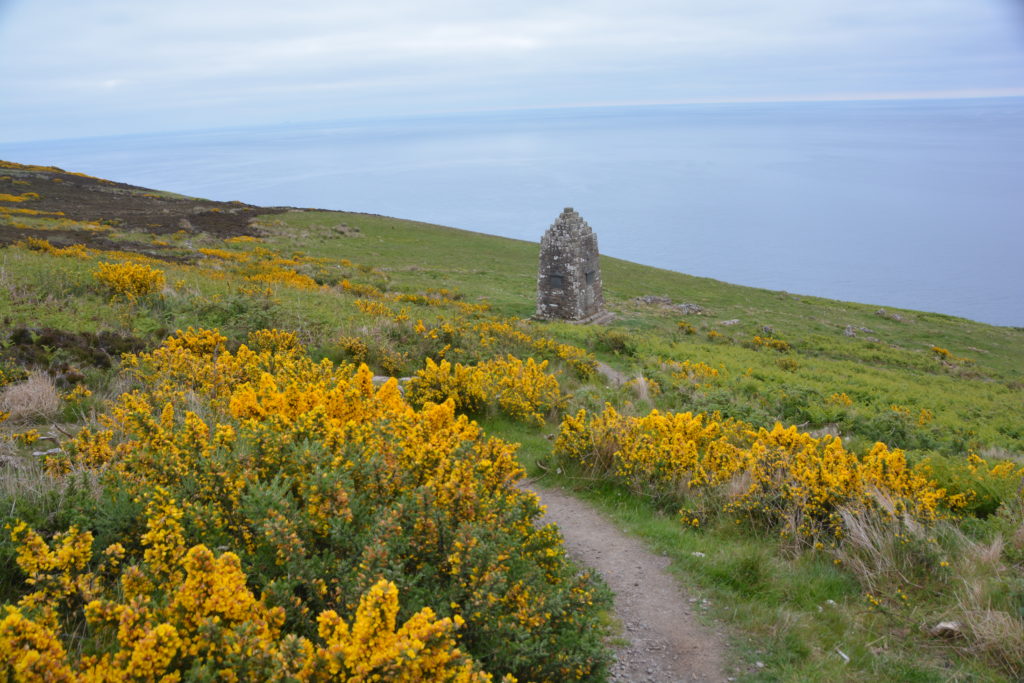
In particular, we visited the remains of a crofters’ village called Bedbea which introduced us to another fascinating part of Scottish history. Starting in the late 18th century through most of the 19th century local clan chieftains and landowners who previously tenanted parcels of their land to farmers decided it was more profitable to run sheep themselves across this land instead of collecting rent from the crofters, as the tenanted farmers were called.
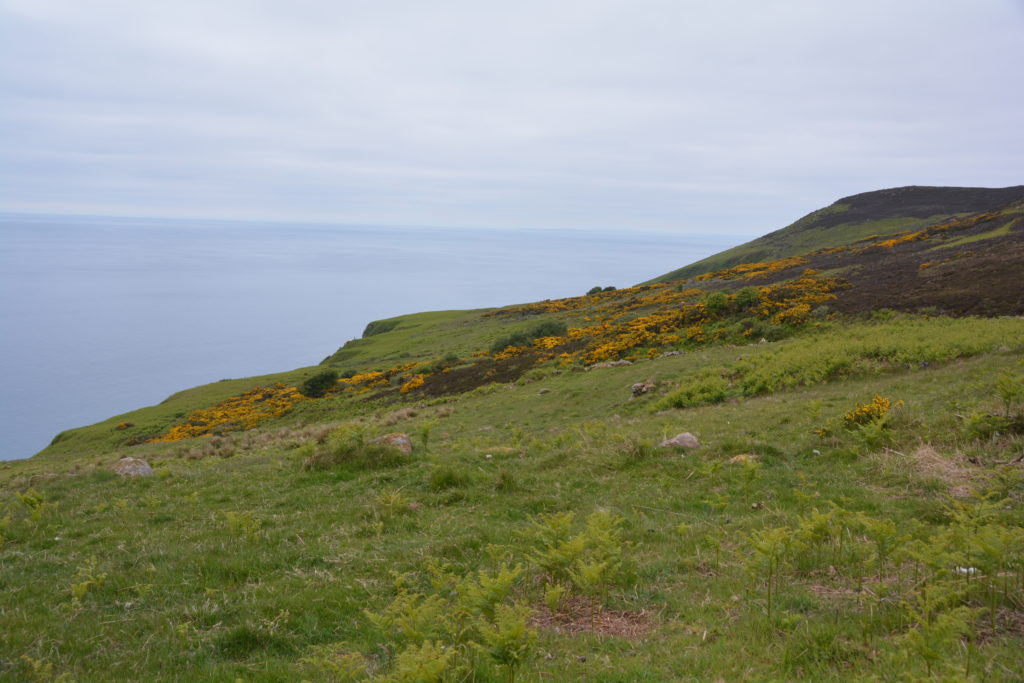
In what is now known as the Highland Clearances, still to this day carrying old grievances and substantial controversy, these landowners evicted many tens of thousands, possibly hundreds of thousands, of peasant farmers, sometimes brutally. We visited the remains of a crofter’s village that some of these farmers were moved to, perched high on a windy cliff, living in stone houses in what must have been extraordinarily difficult circumstances.
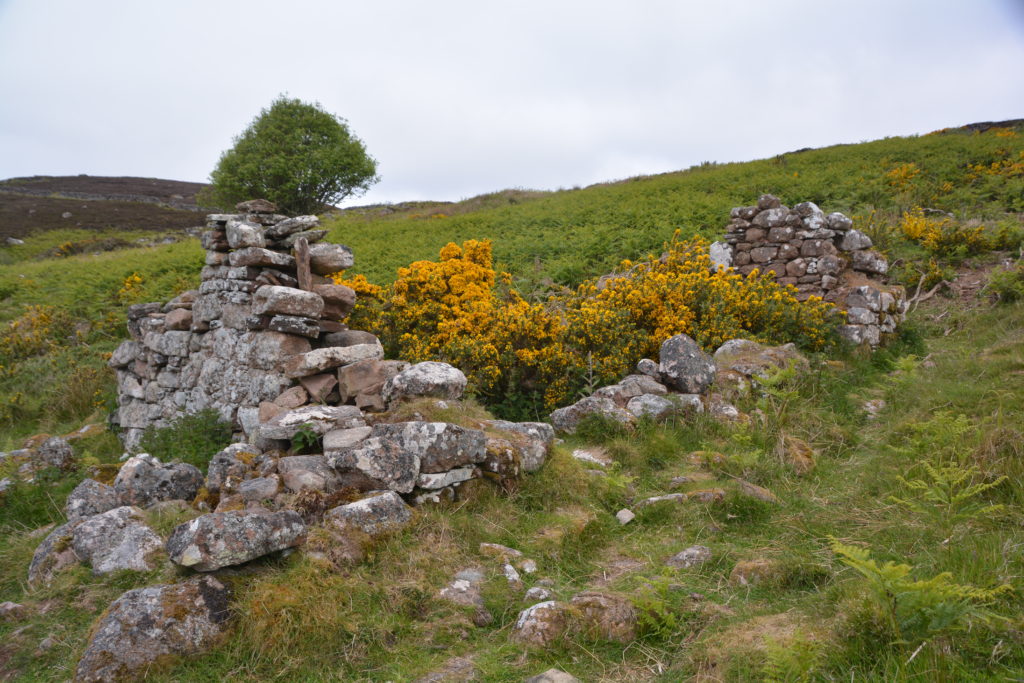
We also walked around the old town of Inverness, the largest city in the Highlands, handsomely perched on the banks of the Ness River with its imposing castle keeping guard above. And of course we had to drive along the shore of beautiful Loch Ness in search of that illusive monster. Sadly, no luck spotting him.
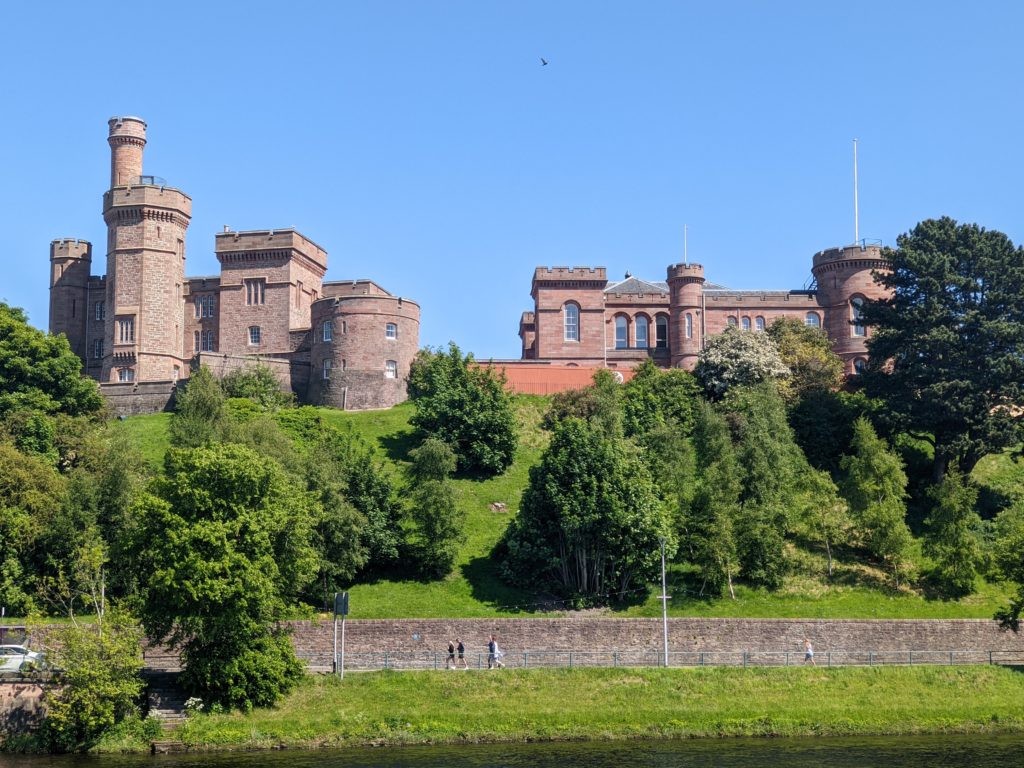
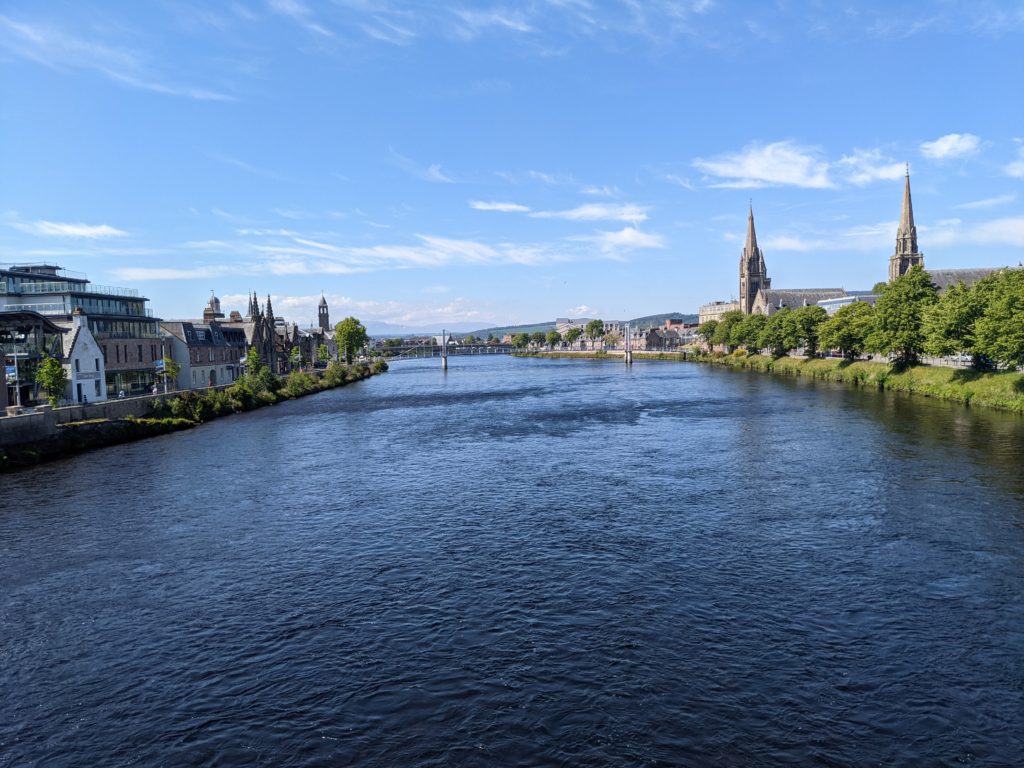
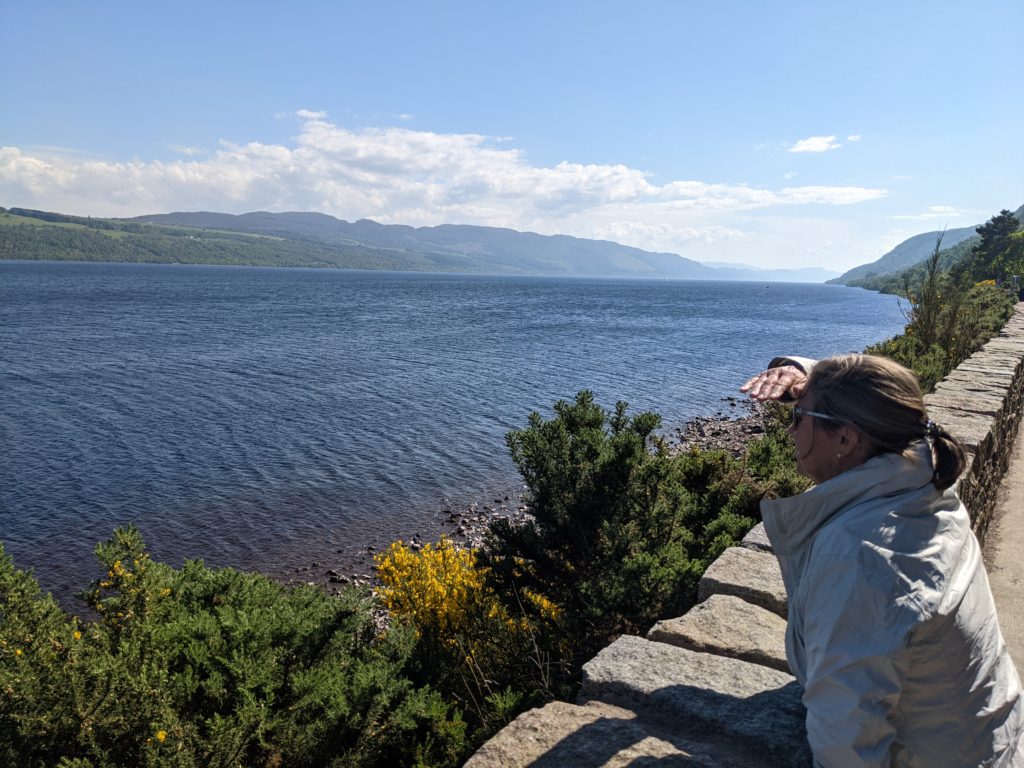
We felt we had some unfinished business on the west coast of Scotland and since we were in the middle of the country and distances are short we zigged over to a large fat peninsula north of Loch Carron which features one of the most spectacular drives in all of Scotland. Applecross Pass narrowly winds its way up and over the mountains to the small community of Applecross on the Inner Sound.
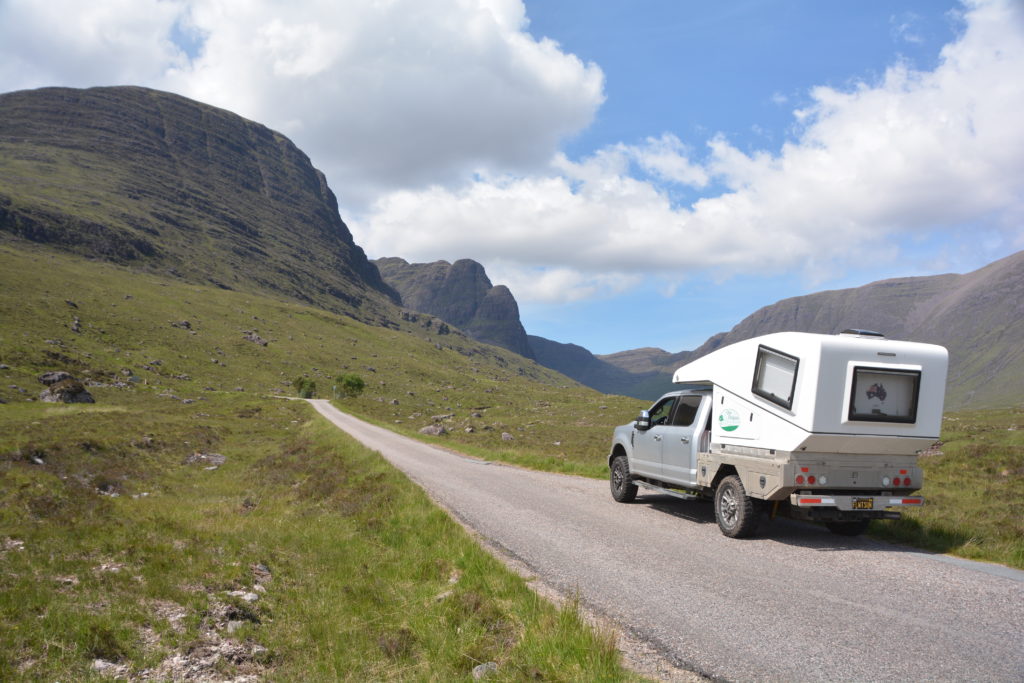
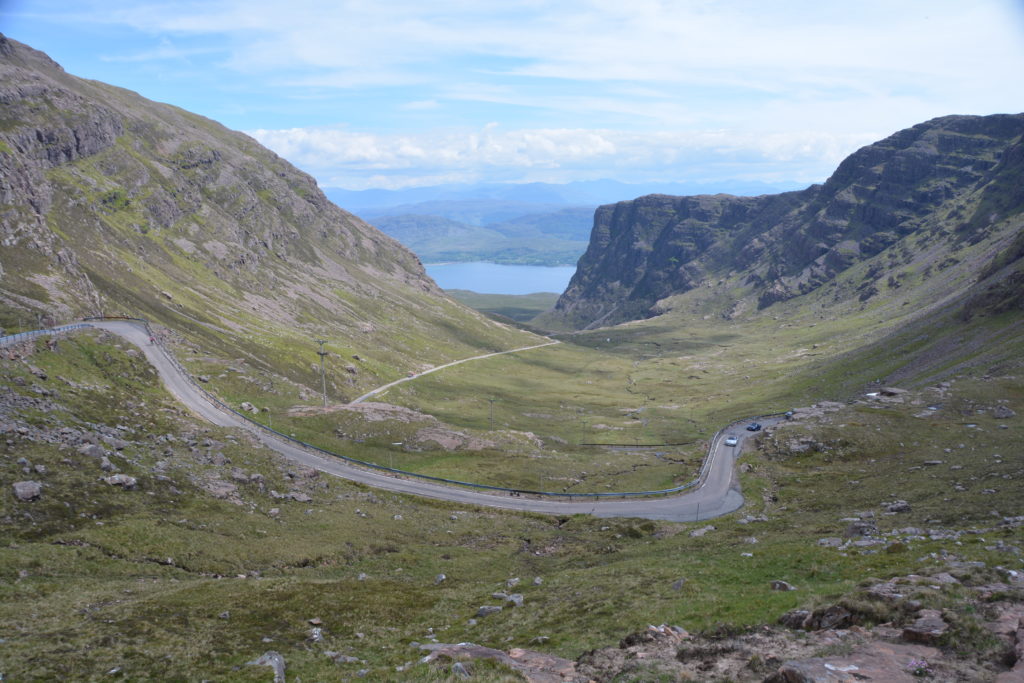
This road, closed in winter during snow, tops out at 2,050 feet (about 625 metres) and provides breathless views for those who survive the drive and make the top. Driving over the pass is an exercise in patience and politeness as cars from both directions negotiate the single lane road, sometimes with steep drop offs on one or both sides and often no guard rails. It doesn’t get any better than this!
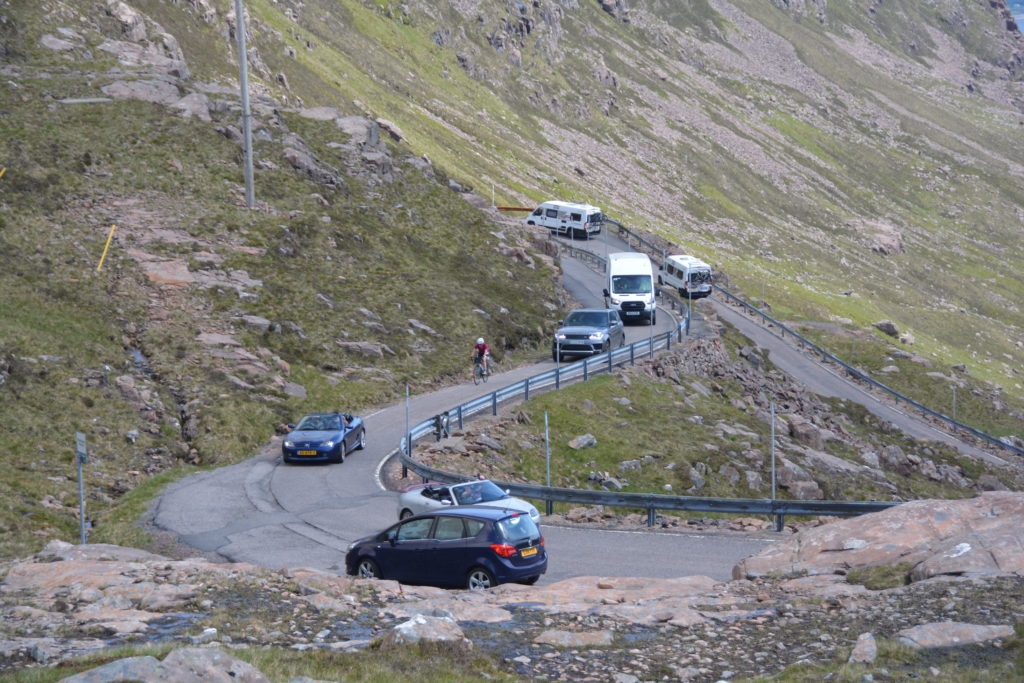
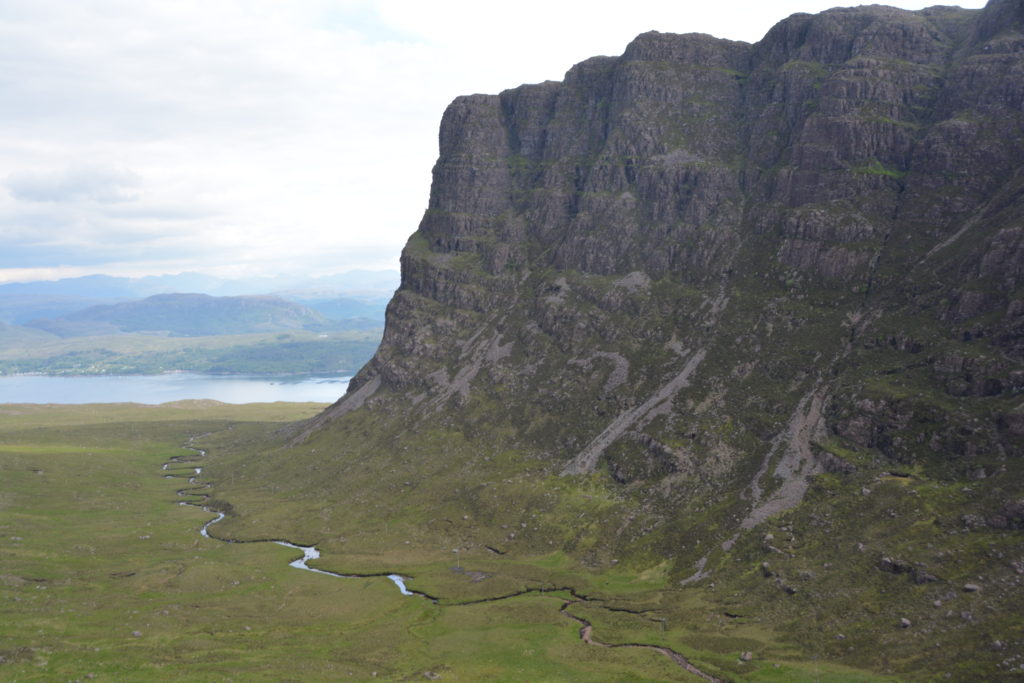
Julie and I have fond but admittedly vague memories of when we travelled around Scotland in 1981 and we felt we had to revisit one of the highlights of that trip – the Isle of Skye. At that time we had to catch a ferry over to the island but today a beautiful modern bridge links Scotland’s second largest island to the mainland. And within minutes we found a beaut campsite at the base of the Cuillin Mountains, blue skies, ubiquitous sheep and the steep green slopes of these dramatic mountains all around us.
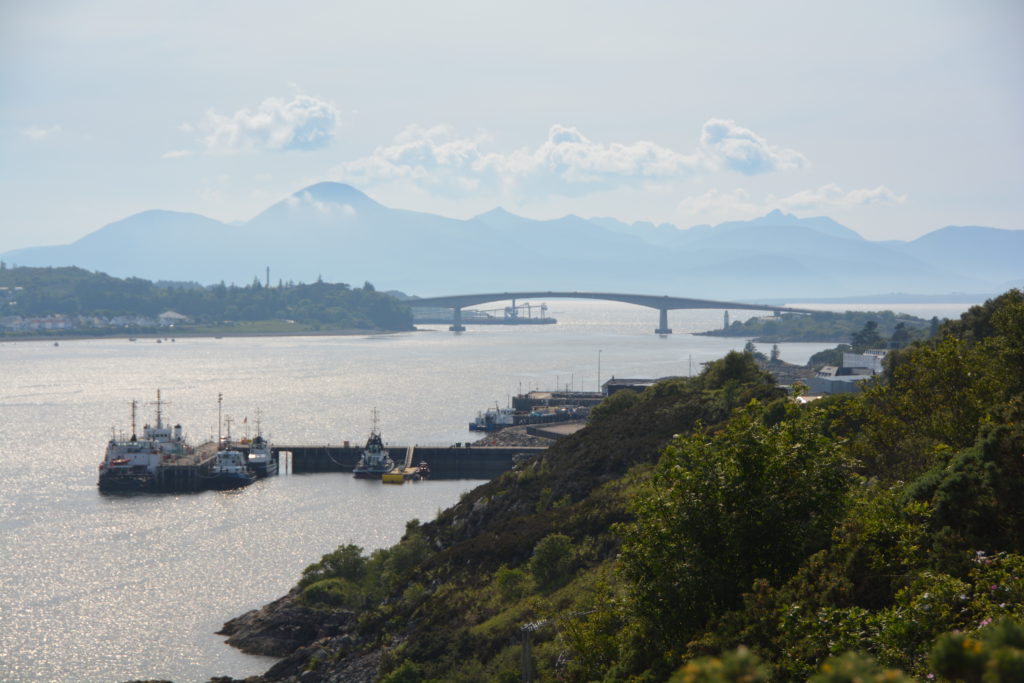
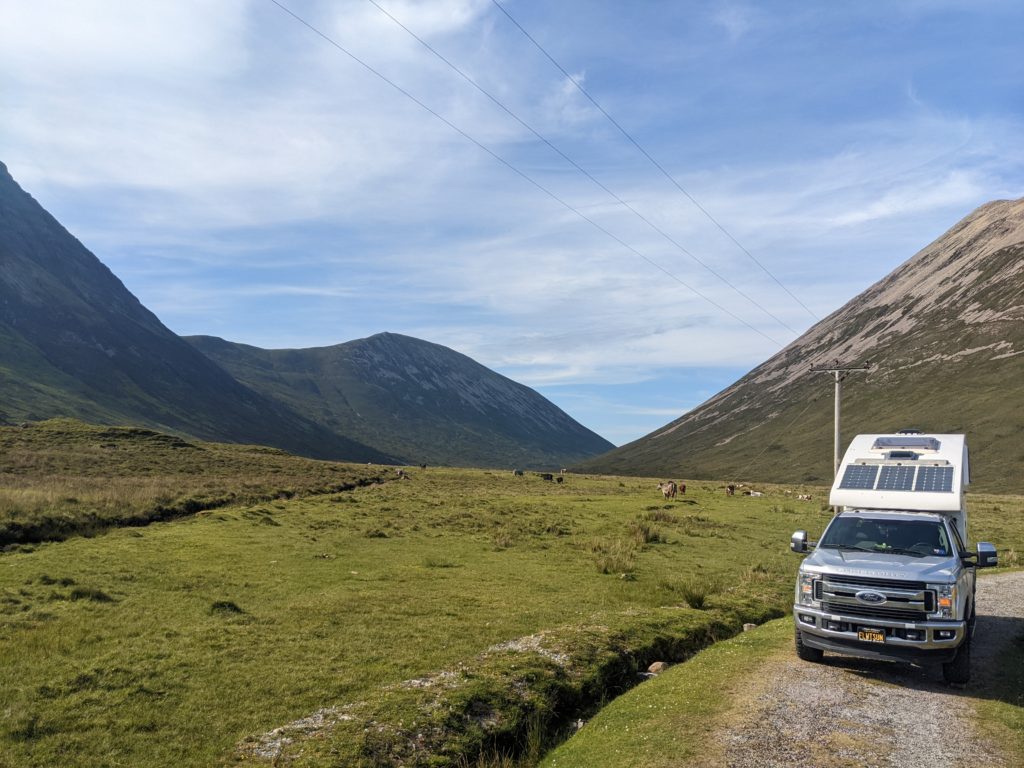
The Cuillin Mountains rise almost vertically from the tidal lochs, carved out by glaciers long ago, green grass stretching up until the barren rocky terrain takes over. We walked up a scant trail along the side of loch we had camped near, the mountains looming above us. The trail led us from loch to loch, connected by a crystal clear stream, boggy most of the time as water leeched out of the saturated ground and slowly oozed down into the lochs. We couldn’t believe our luck walking through this wonderful landscape, in a world all our own, and were reluctant to turn around when we ran out of time.
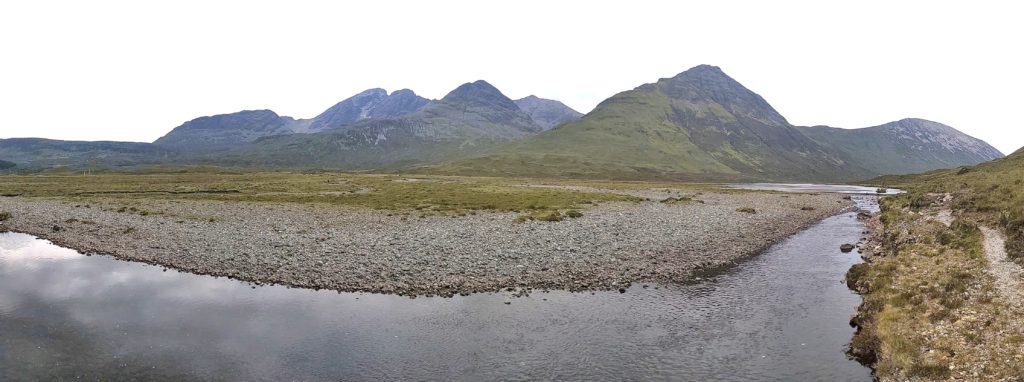
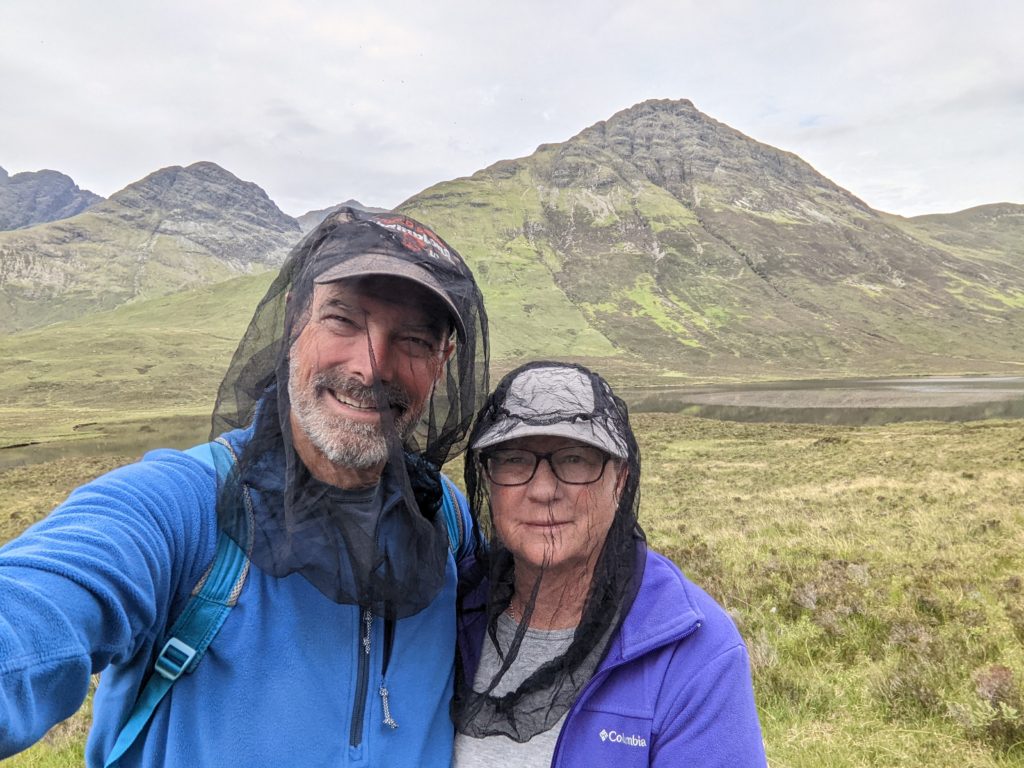
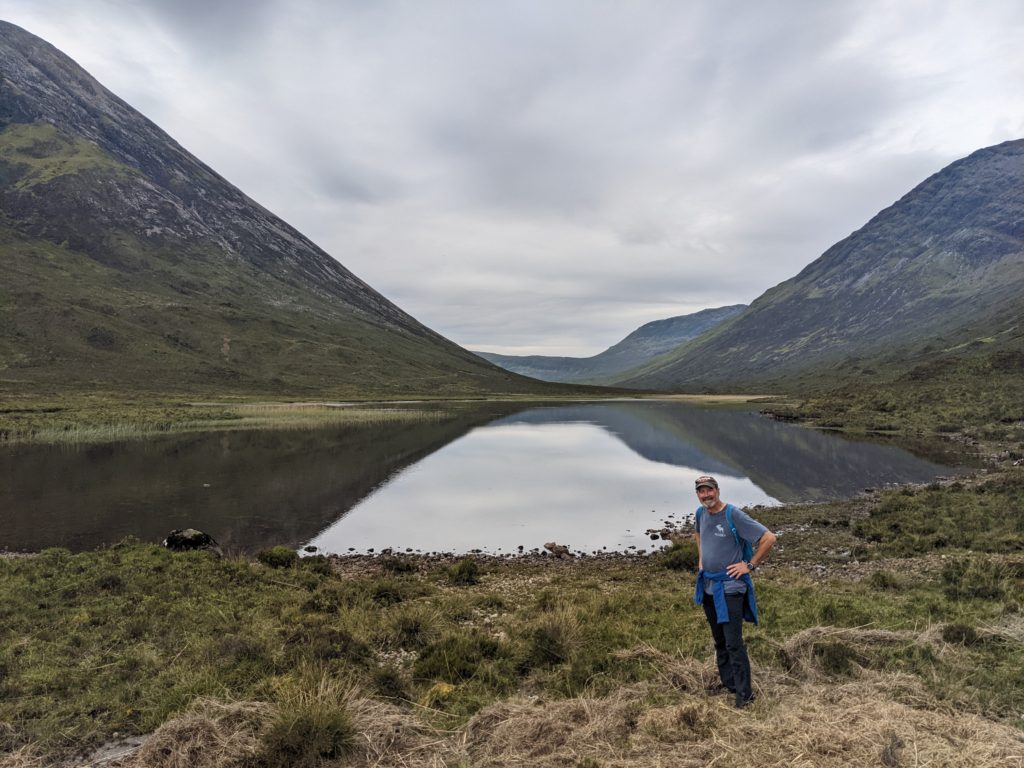
We made our way to the quaint and brightly coloured town of Portree and enjoyed the holiday vibes of such a picturesque place nestled into a protected cove. But up the coast lie one of the most well known landmarks in all of Scotland – the Old Man of Stoer. Rising as a single tall plinth on a cliff line near the ocean, the Old Man of Stoer, often covered in mist and fog, symbolises the raw beauty of this wonderful island.
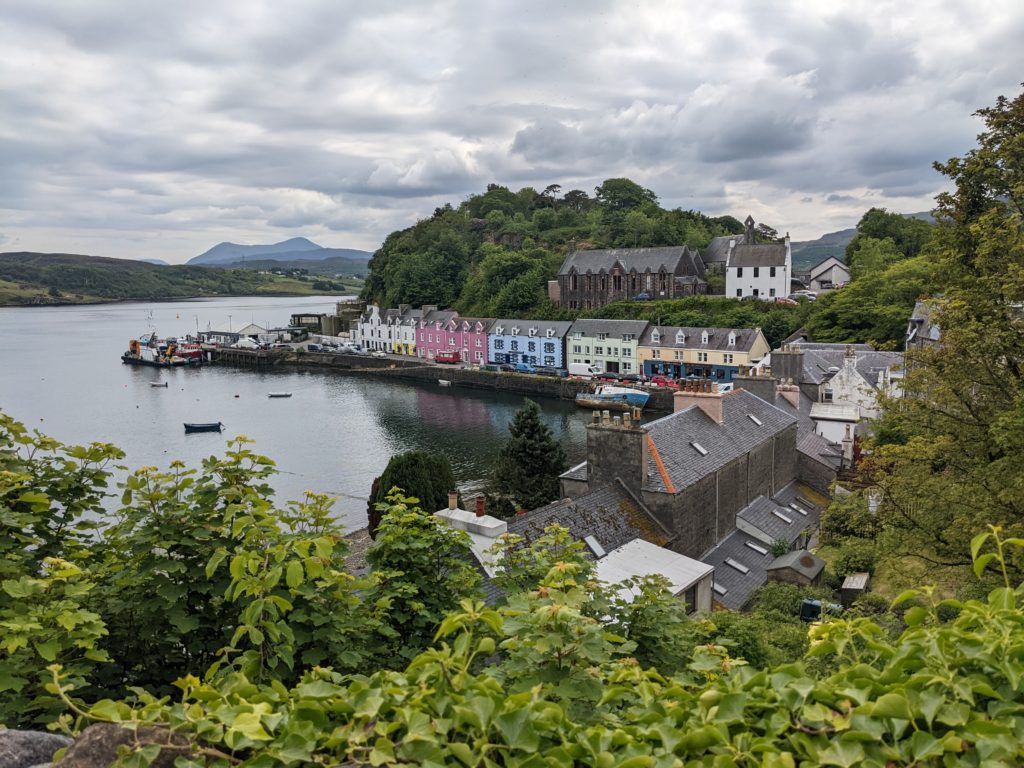
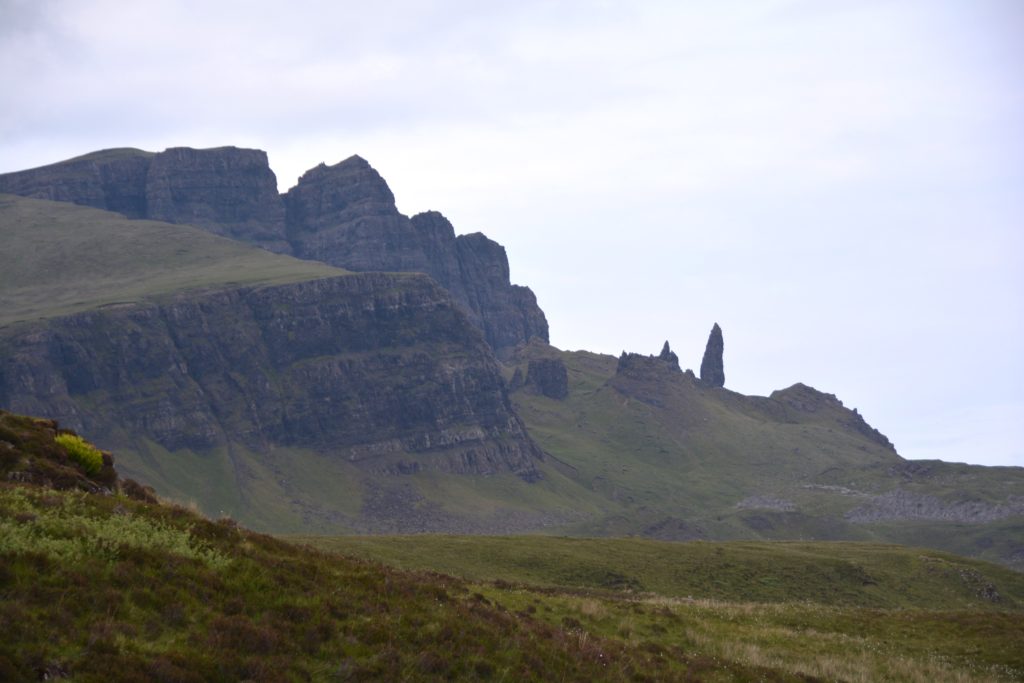
We ended up camping near the slipway of Staffin Harbour and found the nearby famed dinosaur footprints the next morning. Our mission for the day was to complete the loop of the remote northern coast of Skye. This is an area dominated by the crofters’ small plots for grazing sheep at the base of towering mountains, rounded smooth by glaciers, now looming over all who pass.
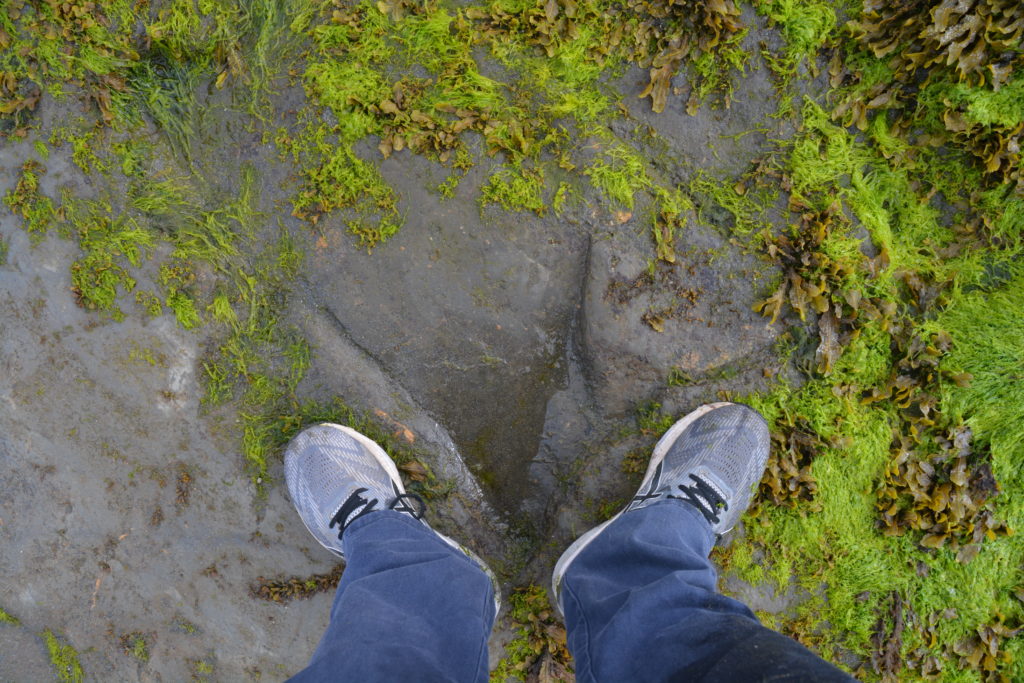
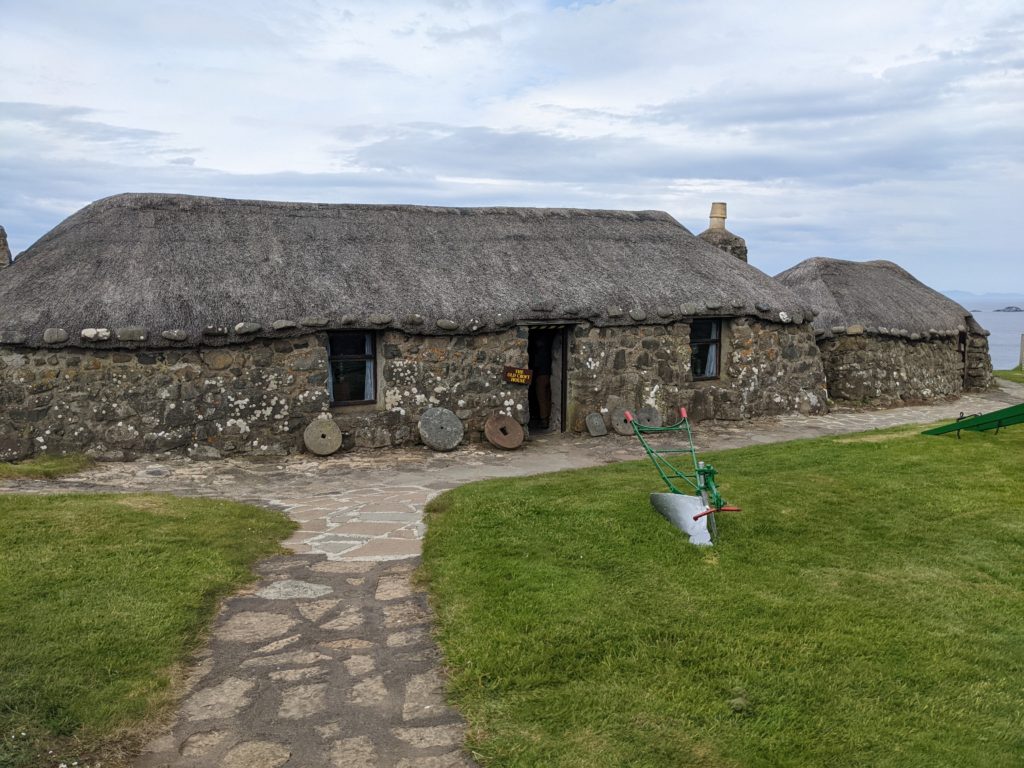
Sadly our time on Skye was closing out but not until we travelled the full distance from north to south through more gorgeous green mountains. If you don’t mind remoteness and seek wide open natural beauty then Skye is your place.
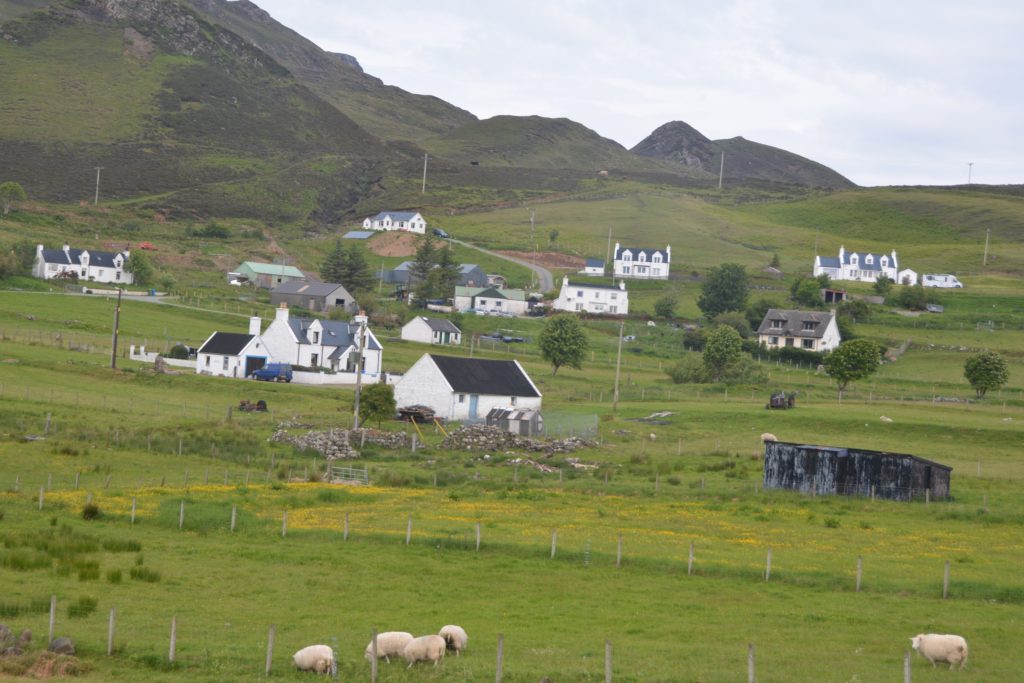
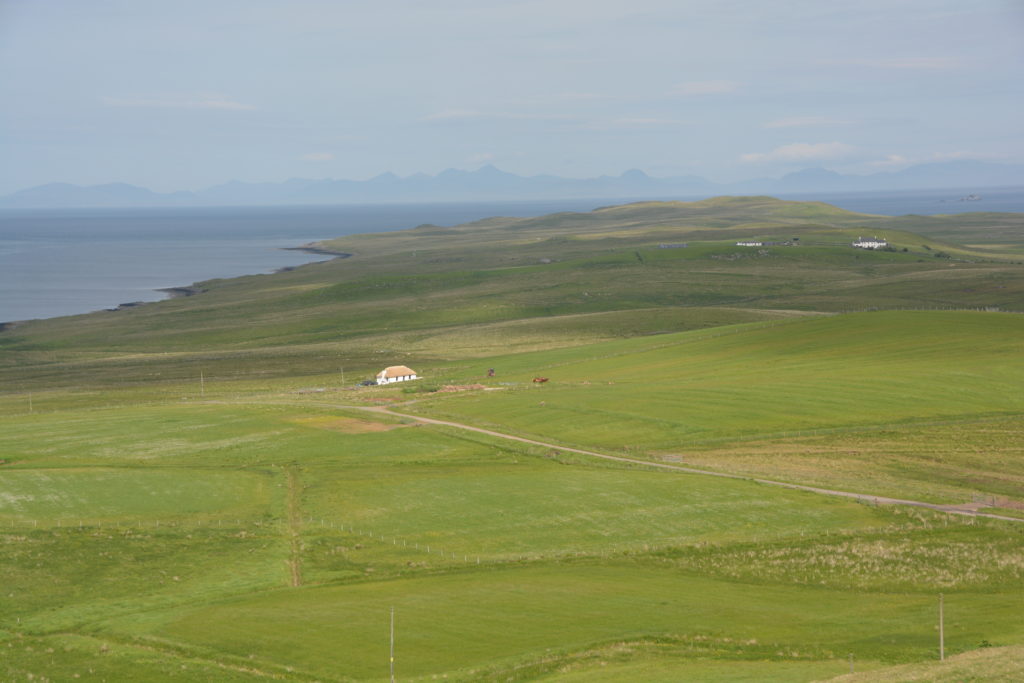
After camping near the attractive and cosy coastal town of Oban, we headed inland for one of Scotland’s most famous sites – Loch Lomond. The expansive Loch Lomond, surrounded by high mountains and sprinkled with islands, is the centrepiece of one of only two national parks in Scotland – Loch Lomond and Trossachs National Park.
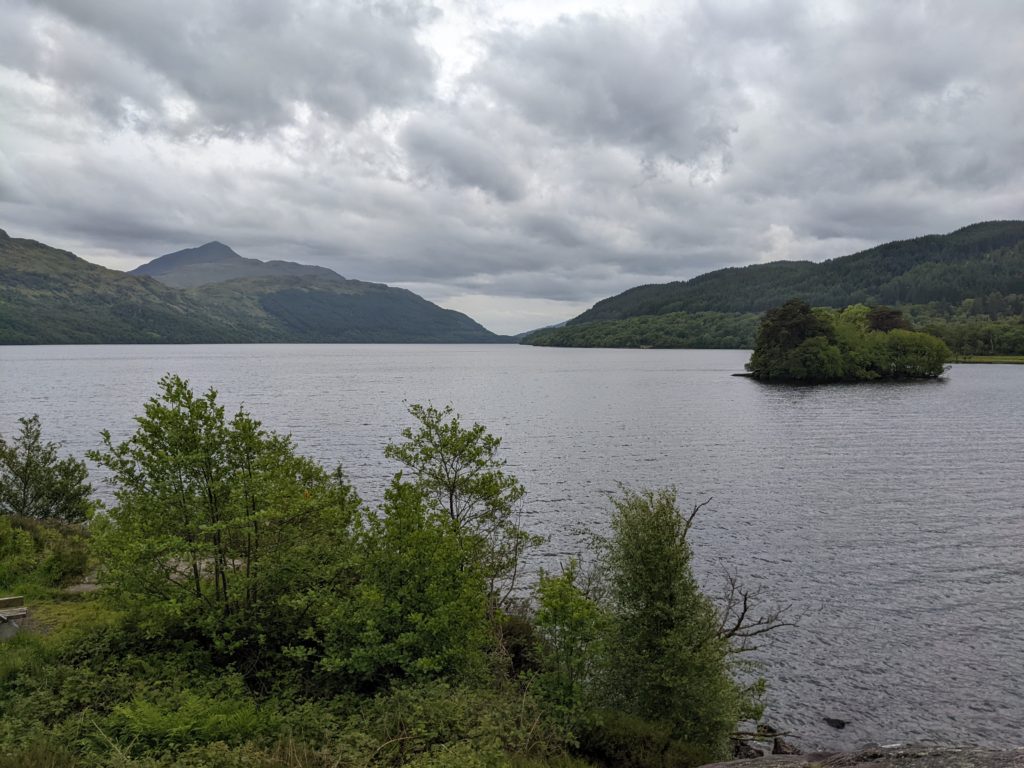
The Trossachs are generally defined as the valley area between and around Loch Katrine and Loch Achray and it is this area we chose to camp for the night, just off a one way gravel track called the Three Lochs Drive. In a forest of pines on the banks of a lochan (a small loch) surrounded by swirling midges and not another soul for miles around, we relished our last night in Scotland before crossing the border back into England and beginning our drive south back to Essex.
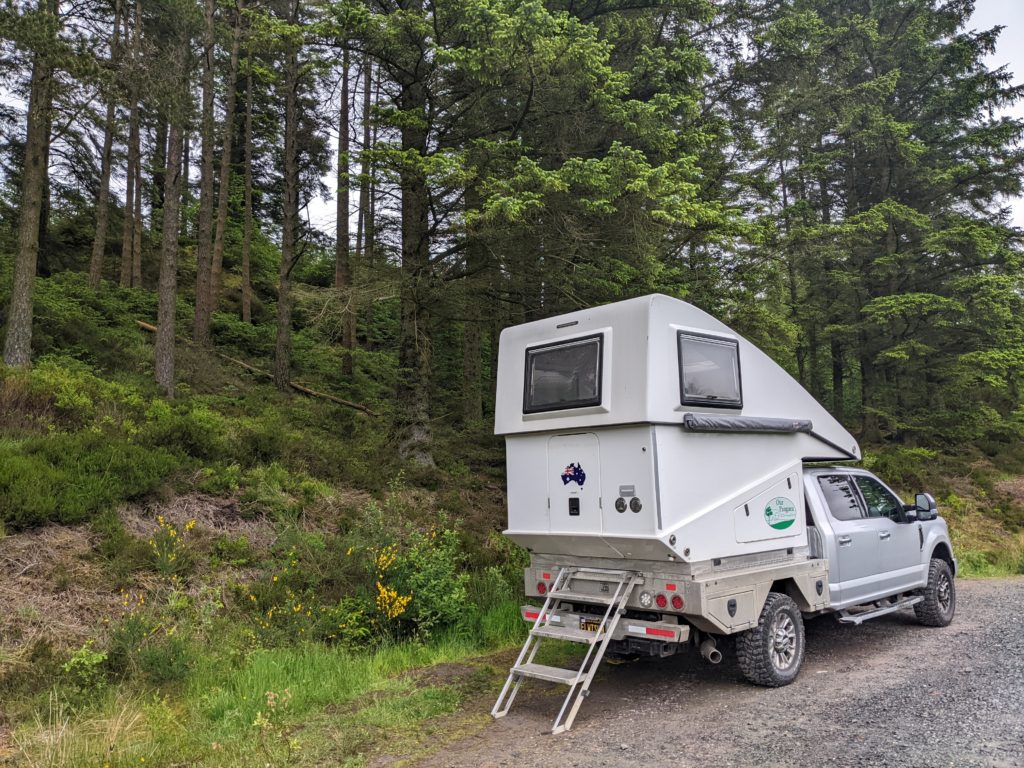
We had flights booked in a few days’ time to fly from London to Reykjavik to start our huge Iceland adventure. Sadly this meant leaving Tramp behind, something we would regret later. Iceland had been a major focus of our travel dreams for 40 years (more on that later) and we were soon to scratch that itch. But first we had a two day drive from Loch Lomond and the Trossachs down to our friends’ Gavin and Emma’s house in Essex.
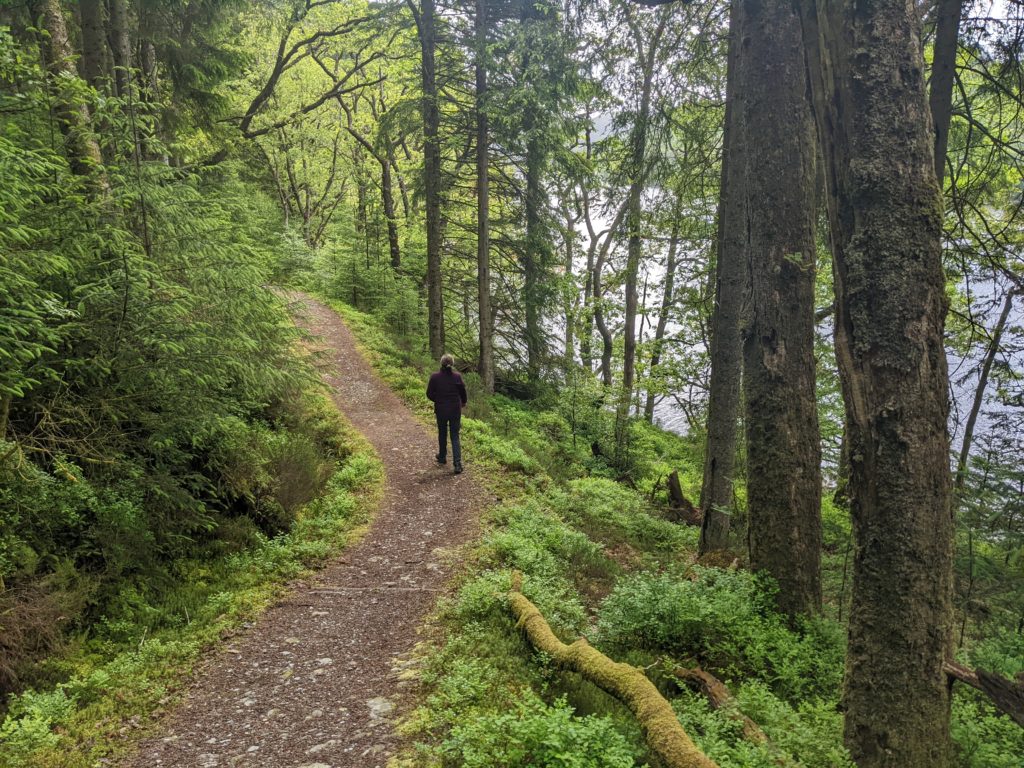
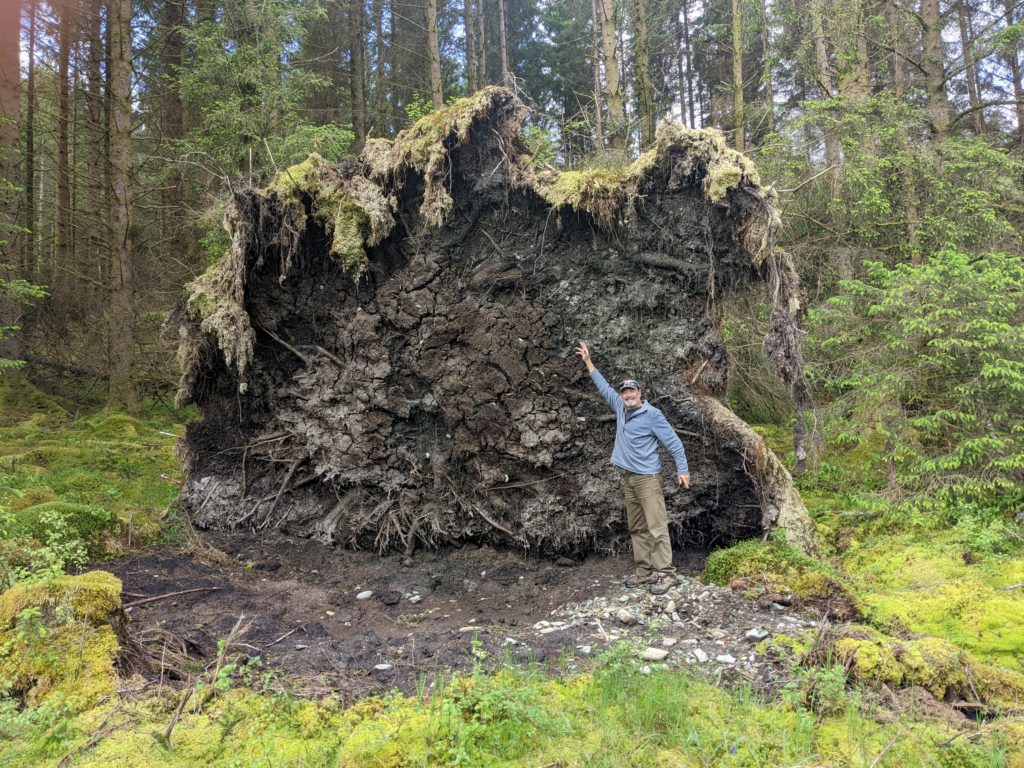
Along the way we stopped at Cawfield Quarry just inside the England border to explore a short section of the famous Hadrian’s Wall. Built in 122 by the Romans at the northern-most boundary of their empire with the intent to keep those pesky northerners (the Scots) out, the 73 mile (120km) coast to coast wall included major forts and outposts along the way to ward off unfriendly visitors for the next 300 years.
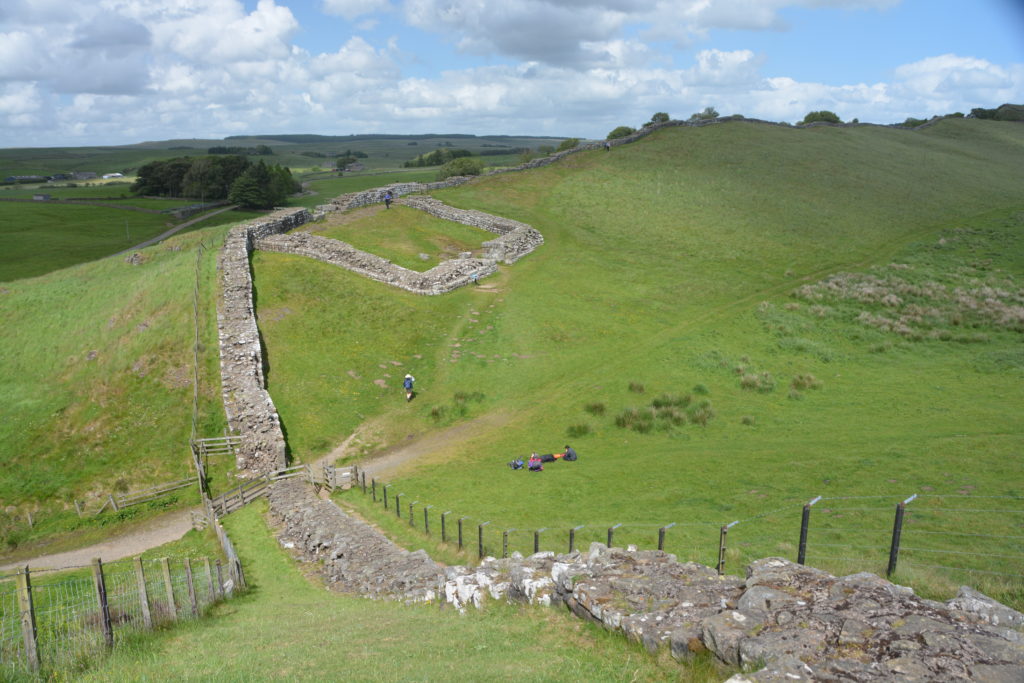
Today a few of the forts have been rebuilt and provide a great insight into life on the frontier of Roman civilisation but we aimed for another section that allowed us to walk along the walls, visit the remains of a small outpost and imagine what life must have been like all those years ago. Absolutely super cool.
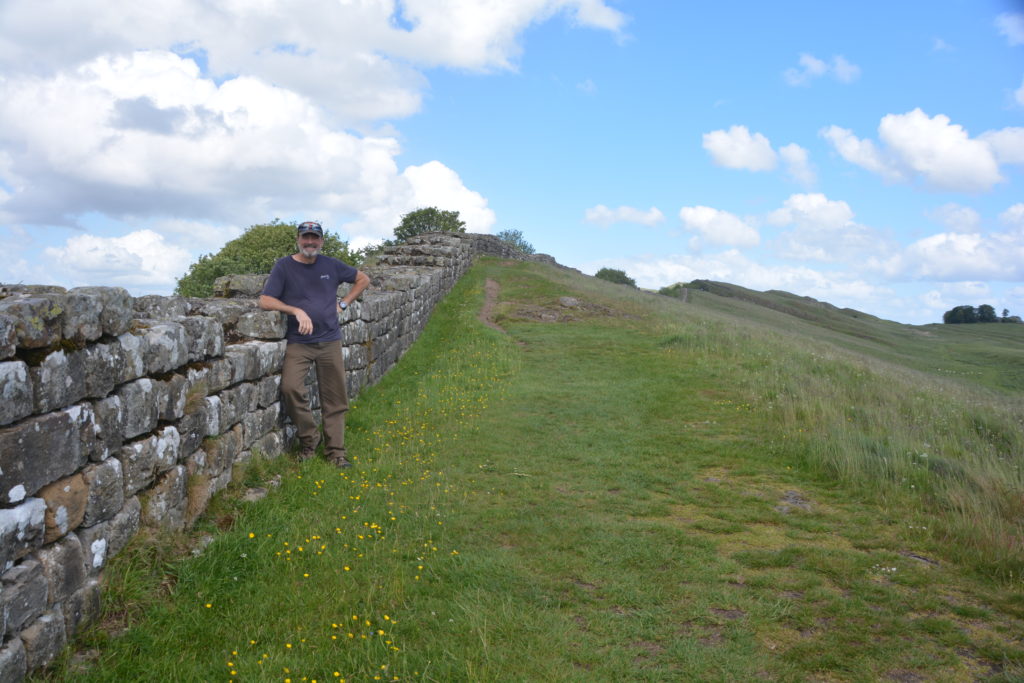
We camped that night in the middle of the North York Moors National Park, just off a gravel track in the middle of open moorland, not a tree or human in sight. This was wild and natural England at its best but the wind was blowing fairly hard and we were rockin’ most of the night.
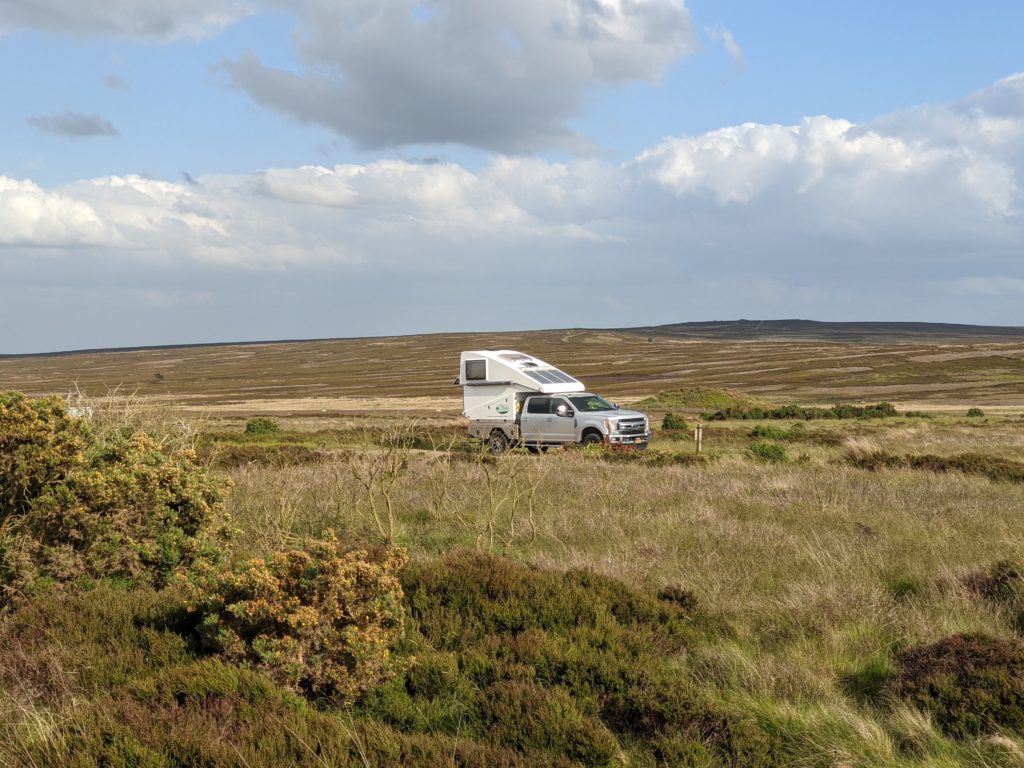
The next day we headed to the coast to visit the historic town of Whitby, childhood home and apprentice training site for Captain James Cook, who is memorialised in the town with a handsome statue, a museum and many street and place names. We’ve seen Captain Cook statues in Nova Scotia, Canada and Anchorage, Alaska where he also left his profound mark but to find him here again in his home town was very cool.
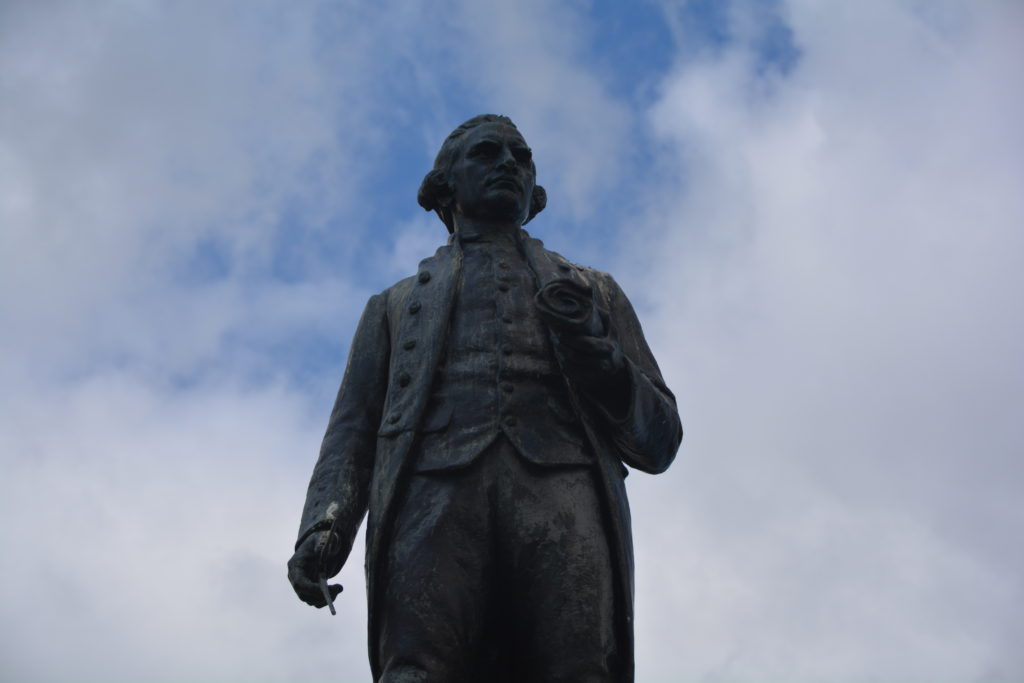
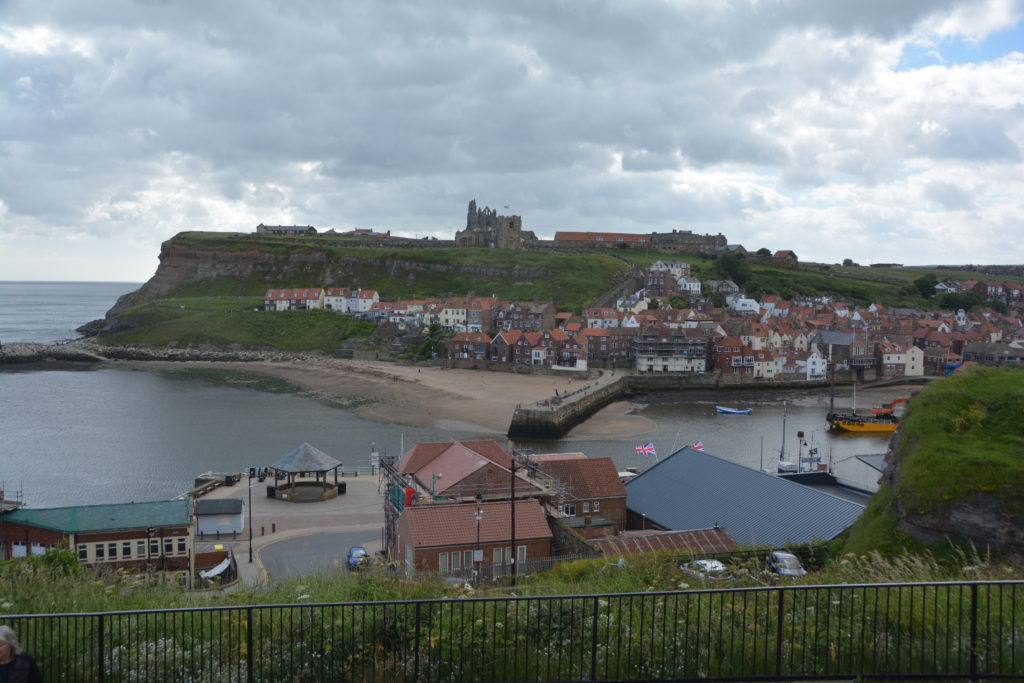
And so our epic six week journey of Ireland and Scotland ended as we finished our huge loop trail back to Gavin and Emma’s home in Essex. We’re in total awe of these magnificent countries, their people, history, culture and land. But the next stage of this four month trip from Australia is about to begin – a special treat to spend two weeks exploring Iceland. We can’t wait!
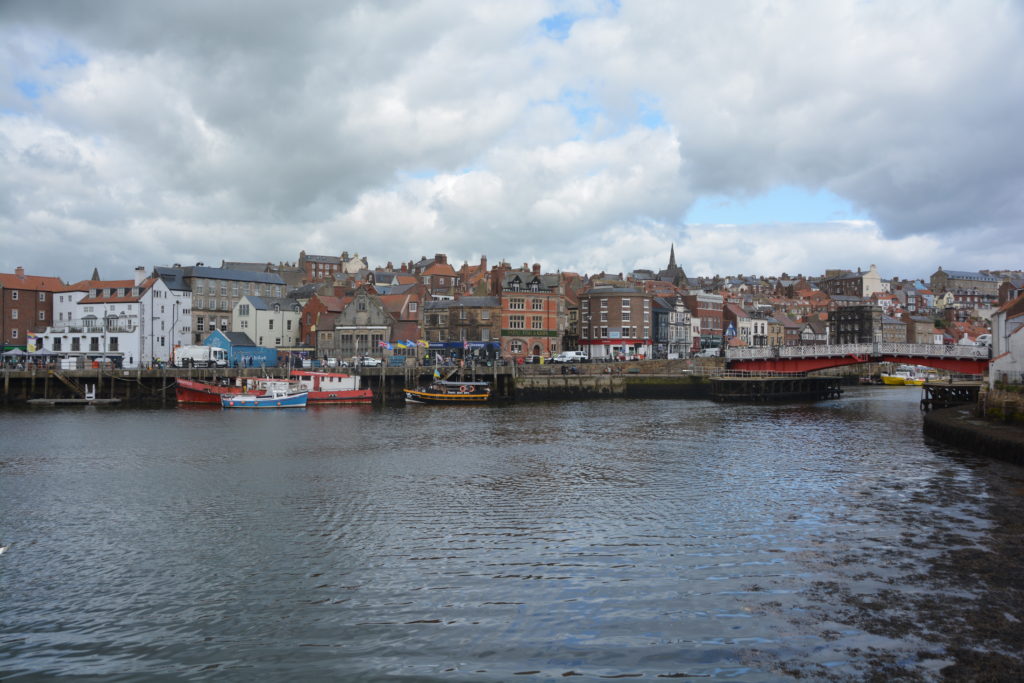
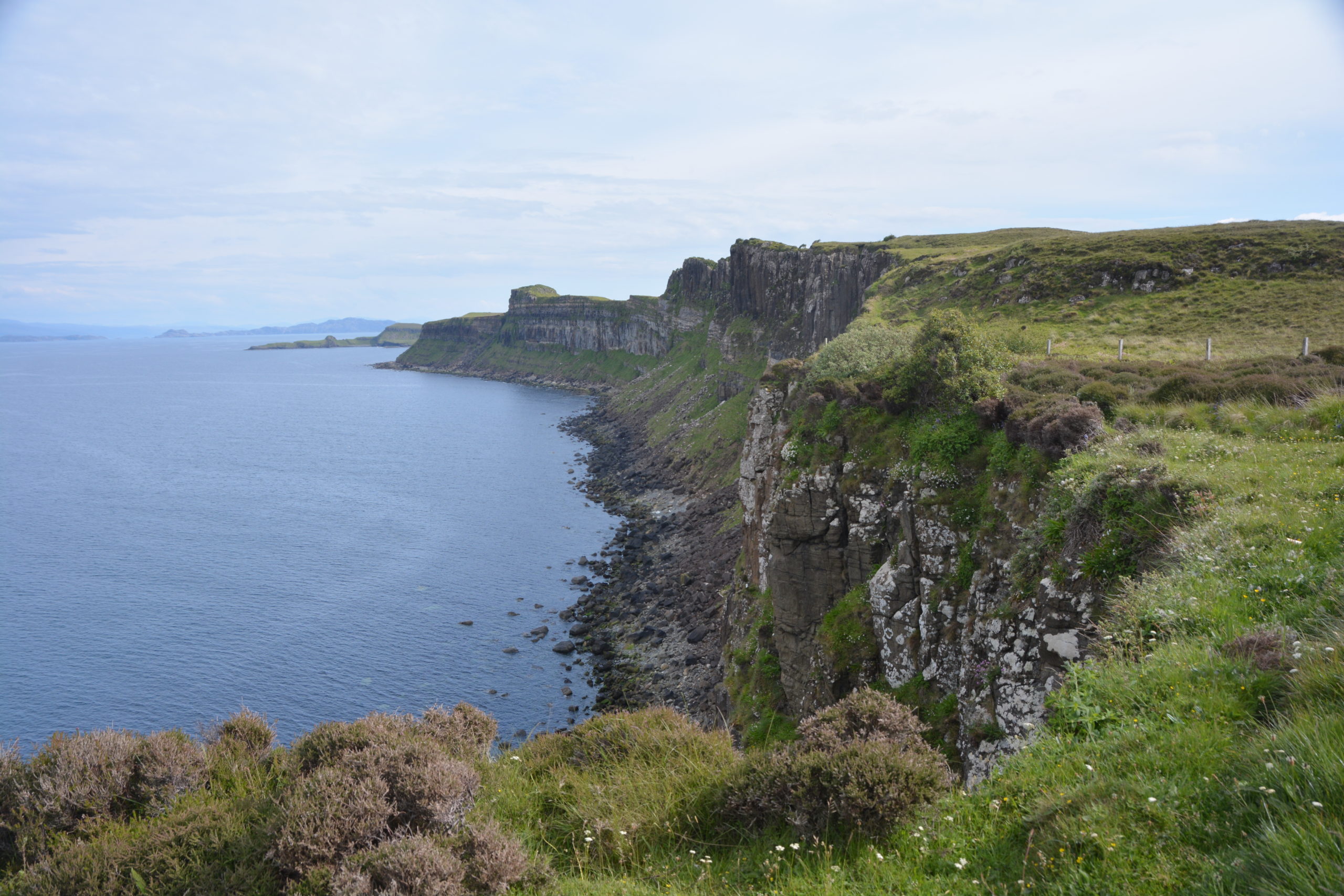
Comments
Southward — No Comments
HTML tags allowed in your comment: <a href="" title=""> <abbr title=""> <acronym title=""> <b> <blockquote cite=""> <cite> <code> <del datetime=""> <em> <i> <q cite=""> <s> <strike> <strong>